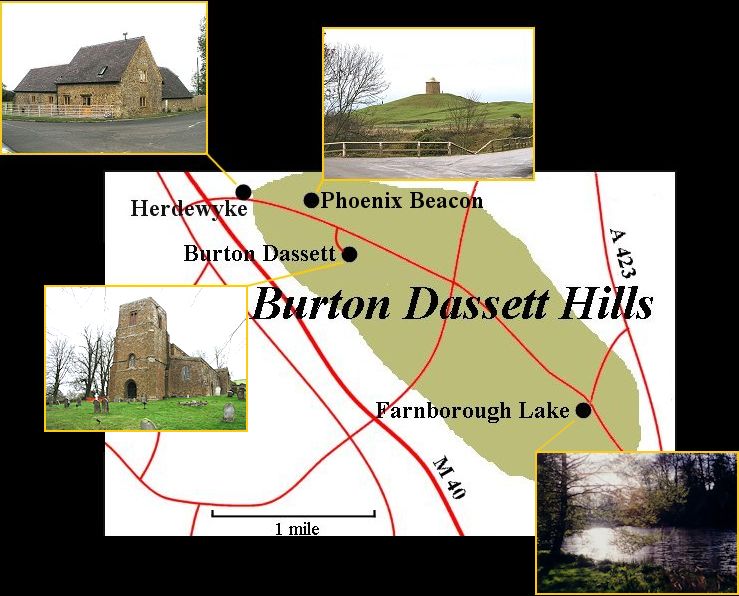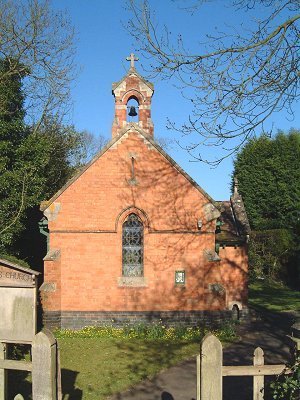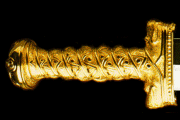Page 9 of 12
The Templars and the Ark of the Covenant

A Second Code
The Phoenix Beacon on the Burton Dassett Hills in the county of Warwickshire.

The tiny chapel in the Warwickshire village of Langley. Here Jacob Cove-Jones installed the stained-glass window that apparently held a code to lead to the Templars' hidden treasure.
How Jacob Cove-Jones solved the supposed code or where it led him, he refused to reveal. If there was a code in the murals, then Cove-Jones would have been in a better position to solve it in the late nineteenth century than someone today. Long neglected and damaged by the passage of time since they were uncovered in 1890, much of the accompanying Latin writing has crumbled away.
However, as the window flanked by the two figures that may have represented Michael and Gabriel faces out onto the Burton Dassett Hills, Graham could not help but wonder if the hills were somehow important. In the Middle Ages, when the murals were painted, the hills were known as the Phoenix Hills. In mythology the phoenix was a firebird and the hills were so named because of the beacon fires that were once lit on top of them as signals of important national events or to convey messages in wartime. A stone structure called the Phoenix Beacon, erected by the Templars who built the church, still stands on the highest point. However, nothing there seemed to provide any clue as to what Cove-Jones may have discovered.
Jacob Cove-Jones may not have told anyone what the purported clues had led him to discover, but he did leave what he claimed was his own coded message to lead others to the location. From what his descendants knew, he had found what he called “a discovery of immense importance” and left it where it was and created his own code to its whereabouts as he feared the murals in Burton Dassett Church would not survive for long now they had been exposed to the air. Why he didn’t tell anyone what he had discovered is a mystery but, from what is known, Cove-Jones had been involved in a dispute with other local historians and acted to spite them.
The code had apparently been left in a stained-glass window that Cove-Jones commissioned an artist friend named Bernard Lamplugh to design, which he donated and had installed in the tiny parish church in the nearby village of Langley. Over the years many local people had tried to solve the conundrum but had apparently failed. In fact, by now most people considered that there was no coded message in the window at all and that Cove-Jones had made the whole thing up. Graham, however, was not so sure. It was something of a fad during the late nineteenth century for wealthy collectors of ancient relics to hide one or more of their prized possessions at the end of a trail of ciphered messages as a kind of personal epitaph, set for future generations to decode. Indeed, he had investigated just such a code left in another stained-glass window. Along with two friends from the USA, Graham and Jodi Russell, he visited Langley church to examine the window.
The Burton Dassett Hills, showing the locations of the Templar preceptory, the Phoenix Beacon, and Burton Dassett Church.








